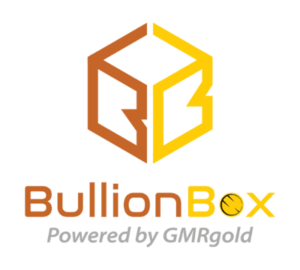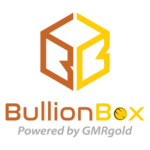Understanding spot prices and premiums is the key to knowing what gold and silver are really worth. The spot price shows the current market value of precious metals, while the premium represents the extra cost you pay for minting, handling, and delivery. That’s why the gold chart might say $2,300 per ounce, but your coin or bar sells for $2,430.
Learning how spot prices and premiums work together helps you recognize fair pricing, avoid overpaying, and make smarter buying decisions. This guide breaks down what drives both numbers and shows how to use them to find real value when purchasing physical gold or silver. We will find out whether it is possible to buy gold at the spot price or not.
What Is the Spot Price?
The spot price is the current trading value of one troy ounce of raw gold or silver on global markets. It’s what large institutional buyers pay when they trade unrefined metal or futures contracts in bulk. Spot prices fluctuate constantly, changing every few seconds based on market activity.
These values are shaped by several forces:
- Futures contracts: Gold’s spot price often mirrors futures trading on exchanges like COMEX or the London Bullion Market.
- Currency strength: A stronger U.S. dollar usually pushes gold’s spot price down, while a weaker dollar makes gold rise.
- Global demand: Economic uncertainty, inflation, and central bank activity influence how investors value gold.
- Interest rates: When rates rise, gold often dips since investors chase yields elsewhere; when rates fall, gold becomes more attractive.
To put it simply, the spot price is the market’s heartbeat. It tells you what gold is worth right now before anyone mints, packages, or sells it.
Average 2025 Spot Prices (YTD)
| Metal | Average Spot Price (per oz) | Year-to-Date Range |
| Gold | $2,300 | $2,150 – $2,400 |
| Silver | $28 | $24 – $31 |
| Platinum | $950 | $870 – $1,020 |
Tracking the spot price daily gives you a reference point. When a dealer lists a gold coin for $2,450 and you know the spot price is $2,300, you can immediately calculate that you’re paying roughly a 6.5% premium.
What Is a Premium, and Why Do You Always Pay It
A premium is the amount added to the spot price to cover real-world production and distribution costs. Without it, mints and dealers couldn’t refine, certify, or deliver bullion.
Premiums include several components:
- Refining and minting: Turning raw metal into a finished coin or bar.
- Distribution and shipping: Covering logistics, packaging, and insurance.
- Dealer markup: Paying for staff, rent, and a modest profit margin.
- Market conditions: Premiums expand when demand surges or supply tightens.
Typical Premium Breakdown
| Component | Typical Impact | Why It Exists |
| Refining & Minting | +1–3% | Labor, machinery, and quality control |
| Packaging & Shipping | +0.5–2% | Protective cases, transport, and insurance |
| Dealer Markup | +1–4% | Operating costs and profit margin |
| Supply & Demand | Variable | Seasonal buying or scarcity pressure |
Premiums aren’t a sign of overcharging; they’re the bridge between a market number and a tangible asset.
For instance:
- Common bullion coins like Maple Leafs or Krugerrands might carry a 5–7% premium.
- Fractional pieces or limited-mintage coins can climb to 10–15%.
- Large bars often have the smallest premiums since production and handling costs are spread over more metal.
When Premiums Rise
- High demand during global uncertainty or inflationary spikes.
- Low mint output or shipping bottlenecks.
- Rising energy and labor costs in refining facilities.
When Premiums Fall
- Calm markets with steady supply.
- Large dealer inventories.
- Slower retail demand outside peak buying seasons.
Knowing these cycles helps you buy when premiums are temporarily lower, even if the spot price hasn’t moved much.
How Spot Price and Premium Work Together
Think of the spot price as the base, and the premium as the real-world adjustment. Add them together, and you get the final price you pay as a buyer.
Final Price = Spot Price + Premium
Here’s what that looks like in practice:
| Gold Type | Spot Price (per oz) | Typical Premium | Final Retail Price |
| 1 oz Gold Bar | $2,300 | +3% | $2,369 |
| 1 oz Gold Eagle Coin | $2,300 | +6% | $2,438 |
| ¼ oz Gold Coin | $575 | +10% | $632 |
| 10 oz Silver Bar | $280 | +5% | $294 |
So, if you see a price that’s way above this normal range, it’s a red flag. And if you find a deal that’s significantly below, it might not be genuine. The goal isn’t just to find the cheapest listing but to find a fair balance between spot and premium.
This understanding separates confident buyers from impulse buyers. Once you grasp that spot prices reflect the market and premiums reflect production, you can evaluate any gold or silver offer instantly.
Factors That Change Premiums Over Time
Premiums aren’t fixed. They rise and fall depending on what’s happening in the economy, the mining industry, and global demand for physical metals. Understanding these shifts helps you spot good timing opportunities and know when prices are unusually high or low.
1. Market Volatility
When global uncertainty increases (like during inflation spikes, wars, or financial instability), investors rush to safe-haven assets such as gold. That sudden surge in buying pushes premiums higher, sometimes even more than the movement of the spot price itself.
2. Mint Production Costs
Minting gold bars and coins involves labor, energy, and logistics. When these costs rise, so do premiums. Higher fuel prices or limited supply of blanks (the round metal discs used to strike coins) can increase the cost of production across the industry.
3. Product Scarcity
When a particular product becomes hard to find, premiums spike. For example, if the U.S. Mint pauses American Eagle production or private mints face supply shortages, demand for existing stock drives premiums upward quickly.
4. Dealer Competition
Premiums are also influenced by how competitive a market is. When many dealers are fighting for business, premiums usually narrow. In smaller or specialized markets, sellers can charge more because options are limited.
5. Order Size
Buying in bulk almost always reduces your per-ounce premium. Dealers pass savings to buyers who purchase several bars or coins at once. On the other hand, small, one-off purchases tend to carry slightly higher costs per piece.
Premium Fluctuation Summary
| Situation | Effect on Premium | Reason |
| Economic instability | Rises | Surge in safe-haven demand |
| Stable markets | Falls | Lower retail activity |
| High production costs | Rises | Mints pass the cost to buyers |
| Oversupply or competition | Falls | Dealers cut margins |
| Bulk purchase | Falls | Per-ounce costs reduced |
Premiums act like a real-time indicator of confidence and demand. When you notice premiums climbing even though the spot price is steady, it’s a sign that more investors are moving into physical gold for security.
How to Buy Gold at (Near) Spot Price
If your goal is to pay as close to the spot price as possible, you’ll need to focus on low-premium, high-purity products and smart buying habits. These tips help you minimize extra costs and get more gold for every dollar.
1. Identify Low-Premium Gold Products
Look for standard bullion that carries minimal markup, such as 1 oz gold bars, Krugerrands, or Maple Leafs. These are mass-produced, highly liquid, and have smaller premiums than collectible or proof coins. Government-backed coins tend to carry slightly higher premiums but are easier to resell, while private-mint bars usually offer the lowest cost per ounce.
2. Consider “Any Condition” Gold Coins and Bars
Dealers often sell coins and bars labeled as “Any Condition” or “Secondary Market.” These are genuine, previously owned items that might have minor surface wear or older packaging, but the gold content is identical. Because they skip cosmetic markups, they often trade at 1–2% closer to spot than brand-new products.
3. Think About Buying Larger Gold Bars Instead of Smaller Ones
Smaller fractional pieces (¼ oz or ½ oz) are convenient but come with higher premiums per ounce due to production costs. If you can afford it, buying larger bars, like 1 oz or 10 oz sizes, reduces the per-ounce cost significantly. Larger bars often come within 2–3% of spot, especially from reputable refiners like PAMP, Valcambi, or Perth Mint.
4. Compare Prices Across Multiple Dealers
Never settle for the first listing you see. Compare at least 3 or 4 reputable dealers side by side to find who’s offering the lowest premium relative to the current spot price. Also factor in shipping, insurance and any additional fees so you’re comparing true out-the-door costs. Verify each dealer’s reputation, authentication guarantees, and customer reviews before you buy.
Sum Up
Knowing how spot prices and premiums work together gives you the clearest view of gold’s true value. The spot price tells you what the market believes the metal is worth; the premium reveals what it actually costs to hold it in your hand.
When you understand both, you stop guessing. You can compare dealers with confidence, recognize fair pricing, and buy physical metals strategically instead of emotionally.
Gold and silver will always move with the markets, but informed buyers don’t panic; they plan. By mastering spot prices and premiums, you give yourself the tools to make every purchase count.
FAQs Spot Prices & Premiums
Why does gold always cost more than the spot price?
Physical gold carries production, handling, and shipping costs that are added to the spot price. Those extra costs form the premium, the real-world expense of transforming raw gold into coins and bars you can buy and hold.
How often does the spot price change?
Spot prices update continuously during global trading hours, often every few seconds. They reflect supply and demand across international exchanges and react instantly to economic or geopolitical news.
Why are silver premiums sometimes higher than gold?
Silver is cheaper per ounce, but storage, shipping, and refining costs aren’t proportionally lower. That makes premiums on silver appear larger in percentage terms, even though the absolute difference is smaller.
Do all gold coins have the same premium?
No. Premiums vary by coin type and availability. Common coins such as Krugerrands or Maple Leafs usually have lower premiums, while rarer or fractional coins tend to cost more due to higher minting expenses.
Is it better to buy when premiums are low or when spot prices are low?
Ideally, both, but in practice, timing one is hard without missing opportunities. The best long-term strategy is to buy regularly and focus on total cost over time instead of trying to predict short-term dips.
Can I negotiate premiums with dealers?
Large-volume buyers can sometimes negotiate, but for most retail investors, premiums are set based on supply and demand. Comparing multiple dealers or joining transparent programs helps you find the fairest price.





